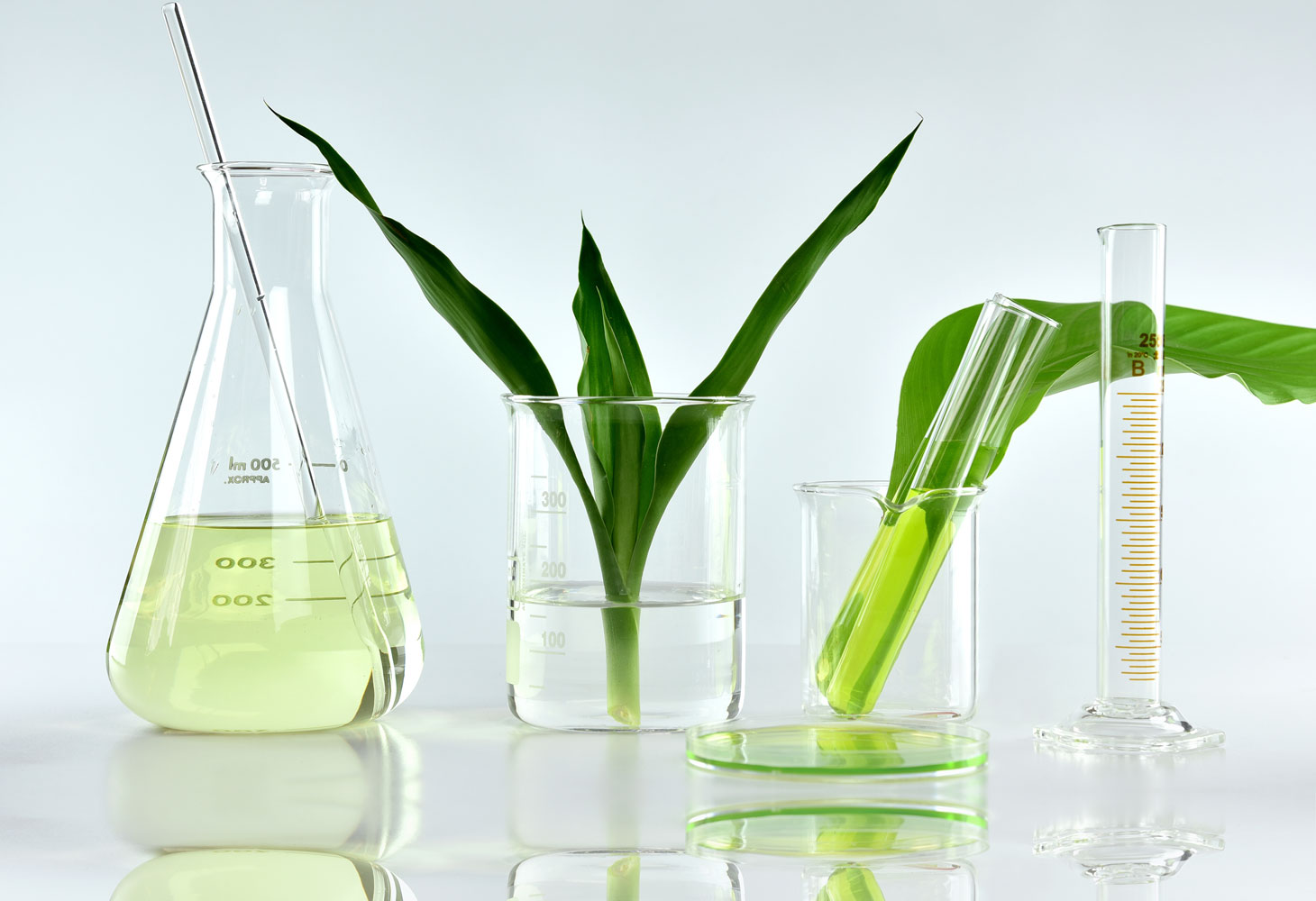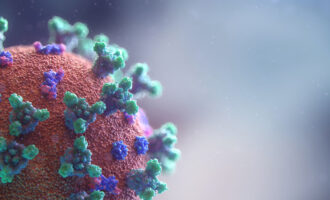
Tribology’s contribution to CO2 reduction and sustainability
By Dr. Raj Shah, Dr. Ajay Kumar, Dr. Mathias Woydt, Nathan Aragon
Energy is the prime mover for virtually all activities of human existence, contributing to prosperity and lifting billions of people out of poverty. On the other hand, this leads to a relentless demand for natural resources. Overuse of energy and resources can elevate carbon footprints and greenhouse gas emissions (GHG). Poor execution of energy resources can be detrimental to extant ecosystems. Reducing wasteful systemic losses through wear and friction, which take a substantial toll on the performance of machines, can help reduce carbon footprints and GHG. Identifying the components of a technology that have the most pronounced impact on the ecosystem is a principal route to reducing this impact. The purpose of this article is to explore how tribology can reduce the carbon footprint of energy-intensive automotive and industrial systems.
It is necessary to address frictional and wear losses, durability, reparability, and condition monitoring of mechanical systems, but to do so, it is necessary to have a firm grasp of the engineering and science of buttressing a machine or a factory operation. This is where the science of tribology comes into play.2 The potential environmental and economic benefits of tribological analysis are enormous. The study of tribology can help reduce total worldwide carbon emissions by decreasing friction,3 extending the use of resources, or reducing wear.
 The impact of tribology as an interdisciplinary science for national economics was demonstrated in 1977 by The American Society of Mechanical Engineers or ASME (40% of energy savings of ~10.9% of energy consumption)4 and in 1976 by the German Federal Ministry of Research and Development (economic savings of > 2.0% of GDP). Energy savings equivalent to 10 Exajoules (EJ) or 10.9% of primary energy converts into savings in CO2 emissions, depending on the energy source of a country. For comparison, in 2019 the U.S. consumed 100.2 quadrillions (quads) of BTU or 105.7 EJ, according to the U.S. Energy Information Administration (EIA). In 2006 a comprehensive two-year study conducted by the Chinese Tribology Institution (CTI), which encompassed eight representative industrial branches (metallurgical industry, energy and petrochemical industries, railway transport, automotive industry, shipping industry, agriculture machinery, aerospace industry and military equipment) demonstrated a conservative estimate of USD41.4 billion per year4 in savings, which is the equivalent of 1.55% of China’s gross domestic product (GDP).
The impact of tribology as an interdisciplinary science for national economics was demonstrated in 1977 by The American Society of Mechanical Engineers or ASME (40% of energy savings of ~10.9% of energy consumption)4 and in 1976 by the German Federal Ministry of Research and Development (economic savings of > 2.0% of GDP). Energy savings equivalent to 10 Exajoules (EJ) or 10.9% of primary energy converts into savings in CO2 emissions, depending on the energy source of a country. For comparison, in 2019 the U.S. consumed 100.2 quadrillions (quads) of BTU or 105.7 EJ, according to the U.S. Energy Information Administration (EIA). In 2006 a comprehensive two-year study conducted by the Chinese Tribology Institution (CTI), which encompassed eight representative industrial branches (metallurgical industry, energy and petrochemical industries, railway transport, automotive industry, shipping industry, agriculture machinery, aerospace industry and military equipment) demonstrated a conservative estimate of USD41.4 billion per year4 in savings, which is the equivalent of 1.55% of China’s gross domestic product (GDP).
Tribological design is also important with regard to the major frictional components of automotive internal combustion engines. In 2018, 1.3 billion vehicles were registered globally, with a further 95 to 100 million cars produced worldwide annually. If mechanical losses or friction in the powertrain could be reduced by 10% due to improved tribology, this could save 1.5% of global fuel consumption. This equates to about 340 litres of petrol throughout the car’s lifetime. Despite the seemingly insignificant savings of USD350 per car, when translated to the total number of vehicles operating today, tribology can contribute to significant fiscal and environmental advantages.
In addition, by keeping extensive and accurate tribological data the dependability and longevity of mechanical parts can be improved. Laboratory testing of combinations of materials, along with all systemic components such as materials and coatings, placed in specific situational proximity, is currently the most accurate means of procuring fundamental tribological data for reliability control purposes. It is believed, supported by current research and empirical evidence, that the correct combination of tribological knowledge, electronics engineering, and mechatronics can assist the design tribologist in extending the lifetime of renewable sources of energy such as wind and tidal turbines.
 Finally, if the field of tribology is going to realise its full potential, an emphasis should be placed on developing, ameliorating, and implementing green lubricants, additives, and waxes. One of the most challenging areas is the development of suitable raw materials via green chemistry to produce these products. A group of researchers have developed a method of synthesising ether-based lubricants that are formed from the reductive etherification of compounds found in biomass. These renewables can help improve engine efficiency due to their low viscosity. Further consideration of their tribological performance may be needed.6 This challenge of developing new lubricants should be analysed within the next decade.
Finally, if the field of tribology is going to realise its full potential, an emphasis should be placed on developing, ameliorating, and implementing green lubricants, additives, and waxes. One of the most challenging areas is the development of suitable raw materials via green chemistry to produce these products. A group of researchers have developed a method of synthesising ether-based lubricants that are formed from the reductive etherification of compounds found in biomass. These renewables can help improve engine efficiency due to their low viscosity. Further consideration of their tribological performance may be needed.6 This challenge of developing new lubricants should be analysed within the next decade.
The Tribology Opportunities Study, funded by the U.S. Advanced Research Projects Agency-Energy (ARPA-E)7, has estimated that more than 30% of the approximately 26 quads of energy currently being consumed in the U.S. by the transportation sector is spent to overcome losses due to friction and wear. Further, they estimate that tribological advances may save nearly 11% (or 10.7 of the 100.2 quads consumed in 2019) across the combined energy use in the transportation, industrial, and utilities sectors in the United States, which is in the same range as the 1977 ASME study. They have listed technologies that could be enabled by targeted research support in tribology.
The U.S. Congress has recognised the impact that tribology has on many sectors of the American economy, including manufacturing, energy production and use, transportation, and greenhouse gas emissions, among others. Representatives Tim Ryan (OH-13), Dan Lipinski (IL-03), and Mike Doyle (PA-14) introduced a resolution in the U.S. House of Representatives on May 2, 20178 which aims to put a spotlight on the need for increased research and development investments in tribology and related fields. Resolution Nos. 916 of 28 September 2016 and 306 of 2 May 2017 by the U.S. House of Representatives state “the importance of tribology for economic growth and competitiveness of the United States”9:
“Whereas approximately a third of the world’s primary energy consumption is attributed to friction, and about 70% of equipment failures is blamed on lubrication breakdown and wear loss; …..”
“Whereas reduction of friction is at the very core of improving fuel economy and reducing greenhouse gas emissions; …”.
 Two Princeton professors, Rob Socolow and Stephen Pacala,10, 11 had introduced the wedge approach to stabilise greenhouse gas emissions in the next 50 years from 2004 (Kyoto Protocol) onwards at 2004 levels and to avoid the benchmark level of 500 parts per million (ppm) CO2 or 2°C mean surface temperature increase. The authors called each chunk of avoided emissions as a ‘wedge’. They advocated that for this to happen, the world must reduce emissions by about 7 gigatons of carbon (GtC) or 25.7 gigatons of CO2 compared to what would be categorised as business as usual (BAU) scenarios. In 2019, total global CO2 emissions were 37.9 gigatons. They have identified seven wedges of alternate technologies with associated 15 potential options to reduce the carbon emissions rate in 2054 by 1 gigaton carbon/year equivalent to 3.67 gigatons CO2 per year. But only the wedge ‘energy efficiency and conservation’ with option #1 ‘efficient vehicles’ is related to tribology.
Two Princeton professors, Rob Socolow and Stephen Pacala,10, 11 had introduced the wedge approach to stabilise greenhouse gas emissions in the next 50 years from 2004 (Kyoto Protocol) onwards at 2004 levels and to avoid the benchmark level of 500 parts per million (ppm) CO2 or 2°C mean surface temperature increase. The authors called each chunk of avoided emissions as a ‘wedge’. They advocated that for this to happen, the world must reduce emissions by about 7 gigatons of carbon (GtC) or 25.7 gigatons of CO2 compared to what would be categorised as business as usual (BAU) scenarios. In 2019, total global CO2 emissions were 37.9 gigatons. They have identified seven wedges of alternate technologies with associated 15 potential options to reduce the carbon emissions rate in 2054 by 1 gigaton carbon/year equivalent to 3.67 gigatons CO2 per year. But only the wedge ‘energy efficiency and conservation’ with option #1 ‘efficient vehicles’ is related to tribology.
They proposed to increase fuel economy from 30 miles per gallon (mpg) to 60 mpg. The average fuel economy of a new car in 2019 according to the U.S. Environmental Protection Agency (EPA) was 25.5 mpg (9.22 L/100 km). The concept of wedges is shown in Figure 3 and the list of wedges is shown in Figure 4. Figure 4 denotes “different strategies that can reduce the carbon emission rate in 2054 by 1 GtC/year or to reduce carbon emissions from 2004 to 2054 by 25 gigatons carbon.”10
The global CO2 emissions in 2019 amounted to approximately 37.9 gigatons. Since frictional losses, according to Holmberg et al.,12, 13 account for 20-23% of the global energy consumption, friction contributes to global CO2 emissions with 7.580-8.720 gigatons.13 The realistic long-term and total reduction potential of primary energy consumption generated by friction losses amounts to ~30%. At 30% long-term reduction of friction this would be approximately 2.274-2.616 gigatons of CO2 lower per year corresponding to at least ‘one wedge’. These represent savings of 6-7%; ASME estimated 10.9% in 1977 and Holmberg et al. 8-8.6% (2017/2919). Tribology already helps us reduce CO2 using two methods: by reducing friction and by extending product life by increasing resistance to wear, thus conserving resources. Tribology represents at least two hidden wedges and is not specific to any industry because friction and wear are ubiquitous.

Taking a tribological approach to the analysis of automotive systems has been shown to be a very important factor in increasing energy efficiency in automotive systems and therefore, decreasing emissions and the carbon footprint. In China, Great Britain, and Germany, tribology was demonstrated to contribute between 1-2% of GDP per year in economic savings due to the reduction of friction and wear losses and lower energy consumption. The impact on greenhouse gas emissions by decreasing CO2 emissions through lower frictional losses and less material footprint due to extended product lives or improved wear resistance is not included in these figures. Additionally, tribology will play a significant role in meeting the criteria outlined in the stabilisation wedges concept. The synthesis of novel lubricants and additives that are more environmentally friendly should also be investigated to supplement the growing knowledge of tribological systems. There have been advancements in making these renewable materials, such as esters, polyethers (PAGs), and bio-olefins derived from biomass; however, much focus is needed on studying the tribological advantages of new materials. It is clear that the design of more CO2 efficient tribological systems can have a tremendous impact on world economies and in contributing to a greener planet.
Tribology holds the key to improving the efficiency of vehicles and the energy-intensive industrial equipment through the ‘energy efficiency and conservation’ wedge. Nonetheless, so far, tribology has not played any role in the climate change discussion. With a global total primary energy supply (TPES) of 584 EJ, according to the BP Energy Outlook 2019, by applying good tribological practices, the mid- and long-term savings could range between 6% and 11% of CO2 emissions in 2019 or 35-64 EJ globally. It is important to note that TPES is projected to grow to 911 quads (or 961 EJ) by 2050.14
Durability or wear protection and sustainability are interlinked and represent the other side of the same tribology-climate coin. The extraction and processing of new materials inevitably generate CO2. The contribution of service life extensions as a result of improved wear resistance and modern condition monitoring is currently difficult to quantify, as the tonnages of resources with their associated CO2 emissions saved cannot be quantified. The dimension of this contribution should also be on the order of one ‘wedge’. The reduction of the material footprint and wastes by extending machine lifetime through improved wear resistance and condition monitoring should be added to the climate change discussion.
References
1 I. Tzanakis, et al. Future Perspectives on Sustainable Tribology. Renewable and Sustainable Energy Reviews 16 (2012), 4126-4140.
2 H.P. Jost, Lubrication (Tribology). Education and Research Report. London: Dept. of Education and Science, Her Majesty’s Stationery Office; 1966.
3 M. Woydt, C. Wincierz, R. Luther, A. Rienäcker, F.-J. Wetzel, T. Hosenfeldt (2019), Tribology in Germany: Interdisciplinary Technology for the Reduction of CO2-Emissions and the Conservation of Resources.
4 O. Pinkus and D. F. Wilcock, Strategy for Energy Conservation through Tribology, 1977, The American Society of Mechanical Engineers.
5 Si-Wei Zhang and You-Bai Xie (eds.). Tribology Science Industrial Application Status and Development Strategy. 2008. The Investigation on Position and Function of Tribology In Industrial Energy Conservation, Consumption and Emission Reduction (Report of Two-year Chinese Investigation). Higher Education Press, ISBN 978-7-04-026378, Beijing, 2009.
6 D. Jadhav, et al. Production of Biomass-Based Automotive Lubricants by Reductive Etherification. ChemSusChem 2017, 10, 2527-2533.
7 P.M. Lee and R. Carpick (eds.), Tribology Opportunities for Enhancing America´s Energy Efficiency – A report to the Advanced Research Projects Agency, 14 February 2017, U.S. DoE.
9 H. Res. 916 – 114th Congress: Recognizing the Impact of Tribology on the United States Economy and Competitiveness in Providing Solutions…” www.GovTrack.us. 28 September 2016.
10 S. Pacala and R. Socolow, Review: Stabilization Wedges: Solving the Climate Problem for the Next 50 Years with Current Technologies, Science, 13 August 2004, Vol. 305, p. 968-972.
11 R. Socolow, R. Hotinski, J. B. Greenblatt and S. Pacala, Solving the Climate Problem – Technologies Available to Curb CO2 Emissions, Environment, December 2004, p. 8-19.
12 K. Holmberg and A. Erdemir, Influence of Tribology on Global Energy Consumption, Costs and Emissions, Friction 5(3): 263–284 (2017).
13 K. Holmberg and A. Erdemir, The impact of Tribology on Energy Use and CO2 Emission Globally and in Combustion Engine and Electric Cars, Tribology International 135 (2019) 389–396.
14 International Energy Outlook 2019 with Projections to 2050, U.S. Energy Information Administration, 14 September 2019.








